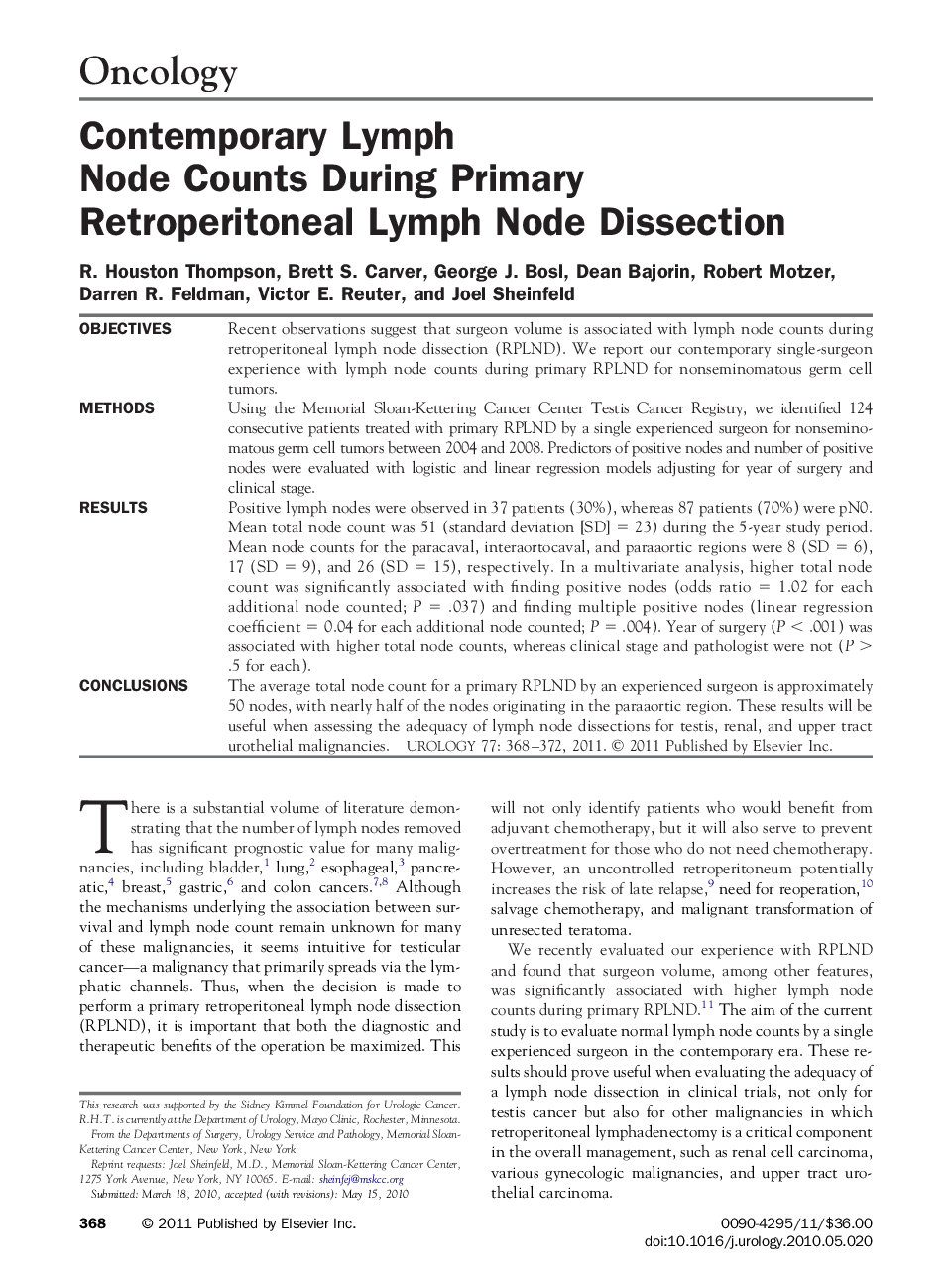| Article ID | Journal | Published Year | Pages | File Type |
|---|---|---|---|---|
| 3902920 | Urology | 2011 | 5 Pages |
ObjectivesRecent observations suggest that surgeon volume is associated with lymph node counts during retroperitoneal lymph node dissection (RPLND). We report our contemporary single-surgeon experience with lymph node counts during primary RPLND for nonseminomatous germ cell tumors.MethodsUsing the Memorial Sloan-Kettering Cancer Center Testis Cancer Registry, we identified 124 consecutive patients treated with primary RPLND by a single experienced surgeon for nonseminomatous germ cell tumors between 2004 and 2008. Predictors of positive nodes and number of positive nodes were evaluated with logistic and linear regression models adjusting for year of surgery and clinical stage.ResultsPositive lymph nodes were observed in 37 patients (30%), whereas 87 patients (70%) were pN0. Mean total node count was 51 (standard deviation [SD] = 23) during the 5-year study period. Mean node counts for the paracaval, interaortocaval, and paraaortic regions were 8 (SD = 6), 17 (SD = 9), and 26 (SD = 15), respectively. In a multivariate analysis, higher total node count was significantly associated with finding positive nodes (odds ratio = 1.02 for each additional node counted; P = .037) and finding multiple positive nodes (linear regression coefficient = 0.04 for each additional node counted; P = .004). Year of surgery (P < .001) was associated with higher total node counts, whereas clinical stage and pathologist were not (P > .5 for each).ConclusionsThe average total node count for a primary RPLND by an experienced surgeon is approximately 50 nodes, with nearly half of the nodes originating in the paraaortic region. These results will be useful when assessing the adequacy of lymph node dissections for testis, renal, and upper tract urothelial malignancies.
